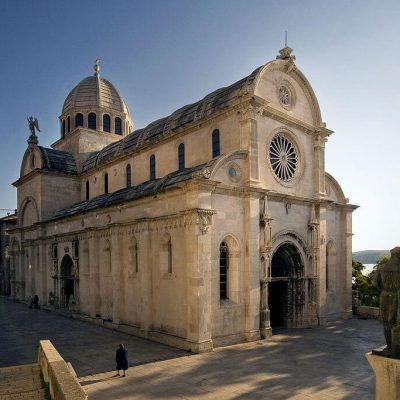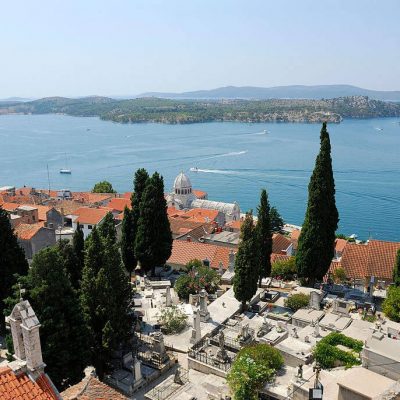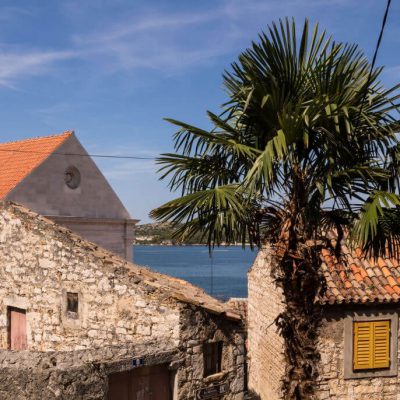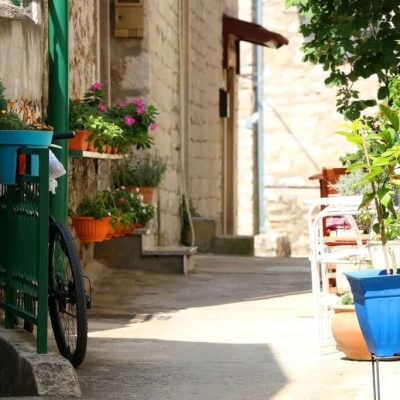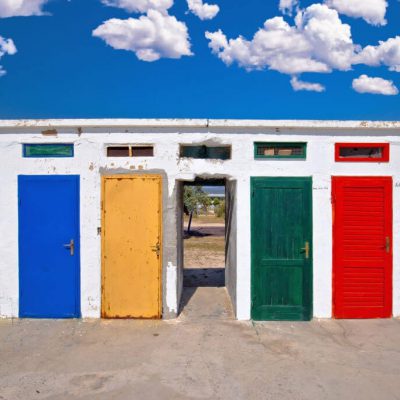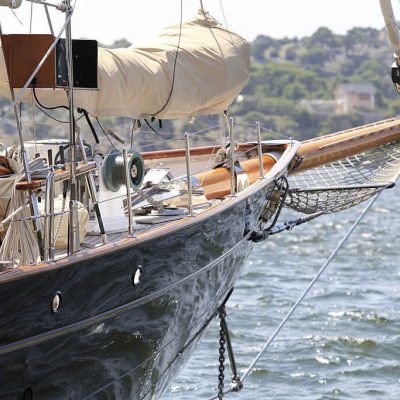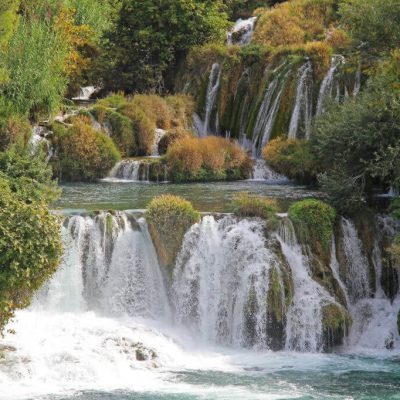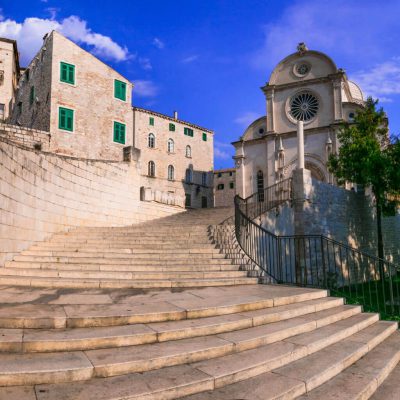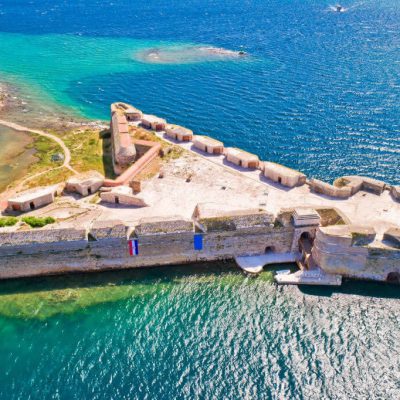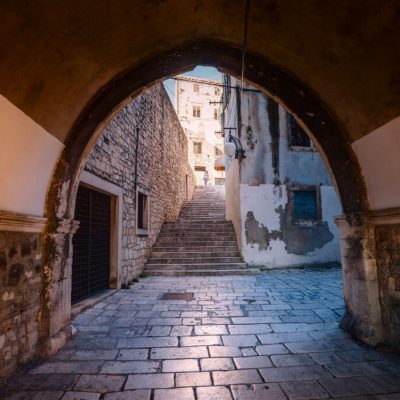Šibenik is the oldest native Croatian town on the Adriatic coast. It was first mentioned in 1066 in a Charter of the Croatian king Petar Krešimir IV. Šibenik was the seat of Croatian kings and an important port; today, visitors can see the four fortresses – St. Nicholas, St. Michael, St. John and Šubićevac – which testify to the long history of Šibenik.
About
Šibenik is the oldest native Croatian town on the Adriatic coast. It was first mentioned in 1066 in a Charter of the Croatian king Petar Krešimir IV. Šibenik was the seat of Croatian kings and an important port; today, visitors can see the four fortresses – St. Nicholas, St. Michael, St. John and Šubićevac – which testify to the long history of Šibenik.
The town is also the birthplace of many famous people: Faust Vrančić, the inventor of the parachute, Juraj Dalmatinac, famous architect and sculptor, Ivan Meštrović, the first living artist to have a solo exhibition in the Victoria and Albert Museum in London (1915) and in the Metropolitan Museum of Art in New York (1947). Let’s not forget Goran Višnjić, Maksim Mrvica and the famous basketball player Dražen Petrović, who were also born in Šibenik.
Although the town is full of historical buildings and churches, nowadays most visitors flock to Šibenik because of the international rock festival Terraneo that takes place during the summer.
Holiday resorts Solaris and Vodice are situated near Šibenik and provide quality accommodation and entertainment to guests visiting both Šibenik and the nearby Krka Falls National Park.
Useful info
Tourist Information Centre
Tourist Information Centre is at Obala Dr. Franje Tuđmana 5.
Tap water is absolutely safe for drinking.
All major items brought into the country (laptops, boats, sauna equipment) must be declared; to do so ensures you will be allowed to take them back when you leave. Keep receipts in order to qualify for a VAT refund at all border customs offices. Any Croatian art or cultural works must receive export approval before purchase.
The electricity supply is 220V, 50Hz.
Postal service
The main post office is at Borajska bb, Ražine, and another one is at Ante Starčevića bb. Both offices are closed on Sundays.
Banks
Erste & Steiermarkische Bank, Raiffeisenbank Austria, Privredna banka Zagreb, Splitska banka, and Zagrebačka banka (among others) have their offices and ATMs in Šibenik. Offices are closed on Sundays.
Traffic
*Šibenik does not have its own airport, but it is served by Zadar airport (50 km to the northwest) and Split airport (45 km to the southeast).
Šibenik train station is about ten minutes west of the Old Town. Getting from Zagreb to Šibenik by train takes about 9 hours and involves a long wait at Knin where you change trains.
Šibenik bus station is a 5-minute walk east of the Old Town. There are multiple daily buses to and from Zagreb, and direct routes link Šibenik to Split, Zadar, Rijeka and Dubrovnik as well.
Public transport in Šibenik is operated by several companies, and buses run from 06:00 to 22:00 with reduced service on Sundays. Single tickets on most lines cost 10 kn.
Visit
Cathedral of St James (Katedrala Sv. Jakova)
With its pale stone dome, Šibenik’s magnificent Cathedral is the town’s main attraction. The project was initiated in 1402 and completed in 1441. The church is built entirely of stone, and its cupola is considered one of the best achievements of Renaissance architecture. Juraj Dalmatinac provided a frieze of 71 stone heads modeled on Šibenik characters from his time. The heads are uniquely lifelike examples of Renaissance sculpture and have served as something of a trademark for the city of Šibenik. The cathedral itself is on the UNESCO World Heritage list.
St Michael’s Fortress (Tvrđava Sv. Mihovila)
One of the first things that visitors see when entering Šibenik by road is the silhouette of St Michael’s Fortress, hovering over the Old Town. Croatian kings ruled from the fort during the 11th century. Today it is open to public and provides a splendid view over the town and the sea.
Šibenik Channel Islands
Thanks to its unique position, Šibenik is an ideal starting point for island hopping. Sail through the Šibenik channel and visit the islands of Zlarin, Prvić, Kaprije, Žirje and Krapanj; or go even farther to Kornati. Krapanj and Zlarin are famous for their sponge industry (Krapanj) and coral diving and coral cottage industry (Zlarin), which goes back to 17th century.
The Medieval Monastery Mediterranean Garden of St Lawrence
Laid out by landscape architect Dragutin Kiš and maintained by children from a local high school, the Mediterranean Garden has become one of Šibenik’s most popular attractions since opening in 2007. The garden aims to provide an accurate impression of what a medieval monastery garden would have looked like, and is a marvellously soothing spot in which to enjoy a few moments of retreat. The collection of plants is laid out in neat geometric beds.
The Šibenik Rebus
High up on the façade of one of the piazza’s houses in Dobrić is Šibenik’s most enigmatic sight, the Rebus or riddle. It’s an oblong stone relief with five symbols – bird’s wings, crossed scythes, two wine flagons, a trio of gaming dice, and a human skull. Try to decipher the message.
St John’s Fortress (Tvrđava Sv. Ivana)
Built in 1646, this fortress is a typical example of 17th-century military architecture. The access path to the fortress leads through a stepped gateway past the remains of barrack blocks, powder stores, World-War-II gun positions and a modern radio mast. The view of the Šibenik Channel is worth the walk.
Krka Falls National Park
Krka Falls is a national park since 1985, with Skradinski buk, Roški slap and the Visovac island as its main attractions. The national park is about 16km from Šibenik, beginning at the Šibenik bridge and continuing towards Knin. Road signs along the way are numerous and clear, marking all the park entrances. Each entry point has a parking lot (free), an information office, and a ticket office. All public roads marked on the park map are open to cars, except for pedestrian areas of Skradinski buk and Visovac Island and its 15th-century Franciscan monastery, which are accessible only by bus and the Krka National Park boats.
Recreation
Cycling and hiking are the most popular activities you can enjoy in the Šibenik hinterland. There are marked cycling trails from Skradin to the waterfalls of Skradinski buk, and from Skradin to the Bribirska Glavica archeological site. You can also go horse riding, rafting and fishing. Hire a boat – or use your own – to sail around the Kornati islands. Diving is also possible, but note that a permit might be required for certain locations.
Šibenik Bridge is probably the most popular bungee jumping spot in Croatia, so if you’re into extreme sports, don’t miss your chance to jump off it.
Gastro
Šaša is a tasty salsa-type sauce served on palenta – grounded cornmeal boiled in water; add to that some local spices and this was the favourite of all meals amongst farmers in the good old days.
Fine white fish such as John Dory (kovač), sea bass (brancin) or sea bream (orada) is usually grilled and served whole. The standard accompaniment for fish is mangold (blitva).
Squid (lignje) is one of the most popular items on local restaurant menus, served grilled or fried in breadcrumbs.
The Šibenik-Skradin area in particular is famous for its shellfish. Due to the Krka’s clear waters the local mullet (cipalj) has a more delicate taste than elsewhere in the Adriatic and is a common feature of restaurant menus as a result.
Skradinski rižot (Skradin risotto) is a traditional meal with the meat cooked slowly for twelve hours and the rice being added only at the end.
Skradin is also famous for the Skradinska torta, a cake that looks like a traditional sponge cake but is made without any flour. The cake’s texture comes from the ground almonds and walnuts that are the prime ingredients, and the unique flavor is a blend of orange peel, honey and rose-petal brandy.
Wines
Šibenik county is a major wine producing region. The most common local wine is the outstanding red Babić, although imported vine strains such as Merlot and Cabernet Sauvignon also flourish here.
Maraština is an old Dalmatian wine sort which can be found along most parts of the Croatian coast. It has a yellow or golden/yellow colour with a discreet and pleasant aroma.
Wineries in the Skradin area produce autochthonous wines such as red Plavina and dry white Debit. If you find yourself there, also try rakija od ruža (rose-petal rakija) and liker od žižula (liqueur flavoured with berries from the jujube tree).



